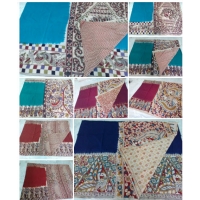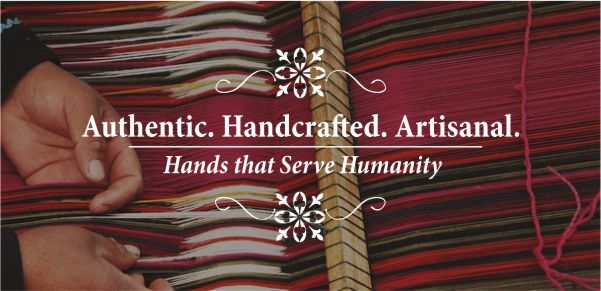Kalamkari Sarees from Andhra, India
Kalamkari Sarees are a work of great skill and labour. Kalam-Pen, Kari-Work, in translation, means working with a pen. This is done using painting and dyeing techniques that are laborious, taking up to two months and involving, as many as, eighteen stages. The figures are from the religious and scriptural paintings found in Hindu temples.
Metallic Salts called Mordents are used for Dyeing to bind the dye to the fibres of fabric. Sri Kalahasti, about 40 miles from Tirupati, is known for use of multiple colours on the dyes and the classical trained artisans that draw beautiful human forms in their depictions. The entire epics are depicted in these Kalamkari creations and the vertical panels along the length of the fabric hold details specific to the main episodes of the Epic.
The deity is a single icon in usually in Blue, Demons get the colour Red, Women are in Yellow and the Monkey God, Hanuman, in Green. Accompanying attendants such as animals or other motifs are all in Black. The Lives of Jesus, Buddha, other religious or mythological stories from the Panchatantras or Jataka Tales, and of course, scenes of daily life and Nature, like the highly stylized peacocks, also find expression in the emerging landscape of a plural India.






